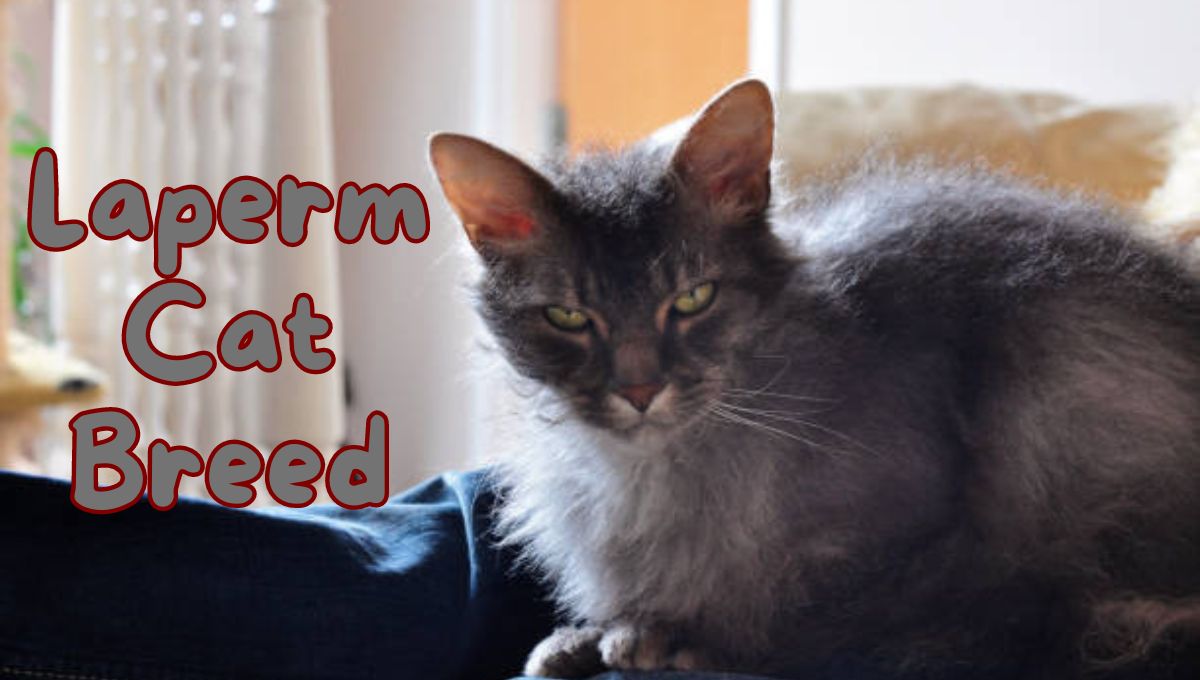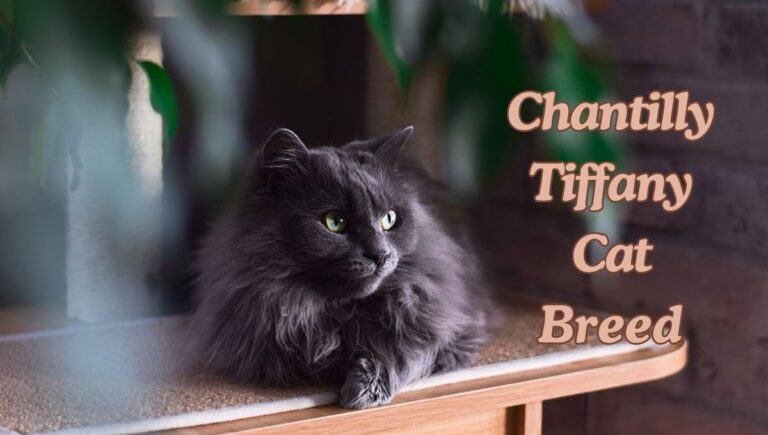Laperm Cat Breed
The Laperm cat breed is renowned for its uniquely curly coat, a feature that distinguishes it from other feline breeds. Originating in the United States, the Laperm was first discovered in the early 1980s on a farm in Oregon. This breed quickly garnered attention for its unusual fur, which can range from tight ringlets to loose waves, giving it a distinct and eye-catching appearance. The breed’s name, Laperm, aptly reflects its defining characteristic of perm-like curls, setting it apart in the feline world.
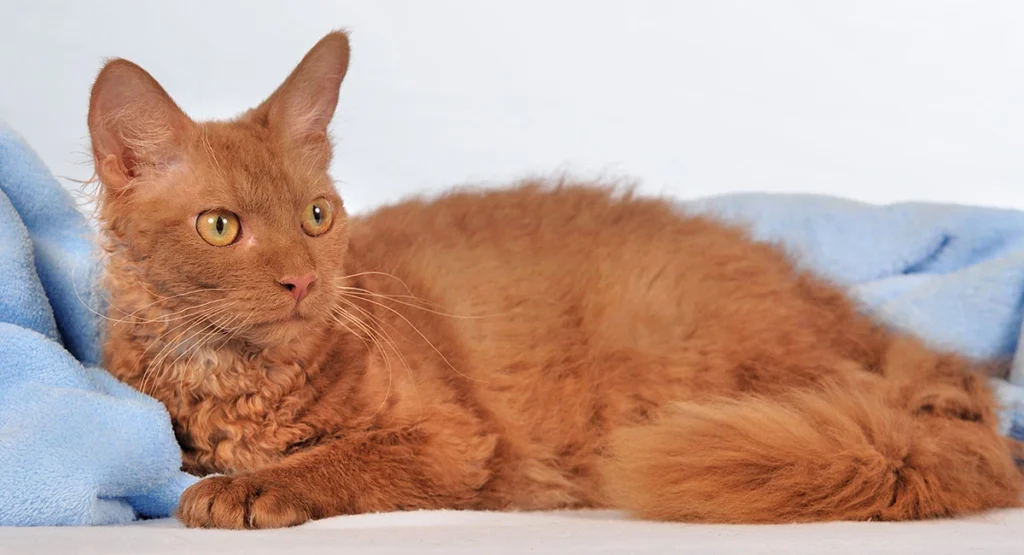
Beyond its striking looks, the Laperm is celebrated for its affectionate and friendly nature. These cats are known for their sociable disposition, often forming strong bonds with their human companions. They are playful and curious, traits that make them delightful and engaging pets. Laperms are also notably gentle and adaptable, making them suitable for families with children and other pets. Their interactive and loving personality ensures they are not just pets but cherished members of the household.
Adding to their appeal is the Laperm’s low shedding and hypoallergenic qualities. This makes them an excellent choice for cat enthusiasts who suffer from allergies. Their grooming needs are minimal despite their curly coats, requiring occasional brushing to prevent matting. Overall, the Laperm is a unique and endearing breed, combining an unusual appearance with a loving and friendly temperament, making them a wonderful addition to any home.
Table of Contents
I. Origin and History of Laperm Cat Breed :
Geographical Region of Origin :
The Laperm cat breed originated in the United States, specifically in The Dalles, Oregon. The breed’s history began relatively recently, in the early 1980s.
Formation and Contributing Breeds :
The Laperm breed developed from a natural genetic mutation. In 1982, a domestic shorthair cat belonging to Linda and Richard Koehl gave birth to a litter of kittens, one of which was born bald but soon grew a unique curly coat. This kitten, named Curly, became the foundation of the Laperm breed. The Koehls allowed Curly to mate with local barn cats, which were a mix of various domestic shorthair and longhair breeds. This created a diverse gene pool and helped establish the curly coat as a dominant trait.
Because of the breed’s natural and spontaneous origin, no specific cat breeds were deliberately introduced to form the Laperm. Instead, it is the result of random breeding among the local cat population in Oregon, which included a variety of domestic cat types.
Characteristics Influenced by Origin :
The Laperm’s origins have significantly influenced its characteristics:
- Curly Coat: The defining feature, the curly or wavy coat, is a result of a spontaneous mutation. This feature distinguishes the Laperm from other cat breeds and contributes to its unique appearance and tactile sensation.
- Personality: Laperms are known for their affectionate and sociable nature. They are friendly, curious, and enjoy human companionship, likely influenced by their close interactions with humans during their development.
- Hardiness: Originating from barn cats, Laperms are generally healthy and robust, accustomed to a variety of environments.
Folklore and Legends :
While there is no ancient folklore or legend surrounding the Laperm breed due to its recent origin, there is a charming story tied to its discovery. The initial bald kitten, Curly, was a source of curiosity and wonder. Her unusual coat and friendly demeanor led to local interest and eventually to the establishment of the breed. The “miracle” of Curly’s birth and her distinctive appearance added a touch of modern folklore to the breed’s development, contributing to its narrative as a naturally occurring wonder.
Recognition and Development
The Laperm was officially recognized as a breed by The International Cat Association (TICA) in 2002 and by the Cat Fanciers’ Association (CFA) in 2008. Since then, it has gained popularity for its unique look and affectionate nature.
In conclusion, the Laperm cat breed’s origins in rural Oregon, emerging from a natural mutation among barn cats, have shaped its distinctive physical and behavioral traits. The breed’s development is a modern story of natural curiosity and selective breeding, resulting in a cat that is both unique and beloved.
II. Physical Characteristic of Laperm Cats :
| Height | Laperm cats typically stand about 6 to 10 inches tall at the shoulder. |
| Weight | They generally weigh between 5 to 10 pounds, with males being slightly larger than females. |
| Life Span | Laperms have a life expectancy of around 12 to 15 years, though some may live longer with proper care. |
| Good With | Laperms are known for being good with children, other cats, and even dogs. They are social and enjoy interacting with their human families. |
| Temperament | Laperms are affectionate, friendly, and playful. They are known for their gentle and loving nature, often seeking out human companionship. |
| Intelligence | Laperms are intelligent and curious cats. They enjoy interactive play and can be trained to perform tricks or follow commands. |
| Shedding Amount | Laperms have a moderate shedding level. Their curly coats can help to reduce the amount of loose hair compared to some other breeds. |
| Grooming | Despite their curly coats, Laperms require minimal grooming. Weekly brushing is usually sufficient to keep their coat in good condition and prevent matting. |
| Exercise Needs | Laperms have moderate exercise needs. They enjoy playing and require regular physical activity to stay healthy and happy. |
| Energy Level | Laperms have a moderate to high energy level. They are active and playful, often engaging in spontaneous bursts of energy. |
| Meowing Level | Laperms are generally not overly vocal. They communicate with their owners through soft meows and purrs but are not as loud as some other breeds. |
| Drool amount | Laperms have a very low tendency to drool, making them a relatively clean breed in this regard. |
| Coat Length/Texture | Laperms can have short to medium-long curly or wavy coats. The texture is soft and light, and the curls can vary from loose and bouncy to tight ringlets. |
| Colors | Laperms come in a wide range of colors, including but not limited to black, white, red, blue, cream, chocolate, lilac, cinnamon, and fawn. |
| Patterns | They can exhibit various patterns, including solid, tabby, tortoiseshell, calico, and bicolor. The diversity in colors and patterns makes each LaPerm unique. |

Detailed Characteristics of the LaPerm Cat Breed
Size :
- Height: Laperm cats typically stand about 6 to 10 inches (15 to 25 cm) tall at the shoulder.
- Weight:
- Males: Typically weigh between 7 to 10 pounds (3 to 4.5 kg).
- Females: Typically weigh between 5 to 8 pounds (2.3 to 3.6 kg).
Coat Type and Length :
- Coat Texture: The defining characteristic of the Laperm breed is its curly or wavy coat. The curls can range from loose and bouncy to tight ringlets, giving each cat a unique appearance.
- Coat Length: Laperms can have either short or medium-long coats. The short-haired variety has a more textured, springy coat, while the medium-long haired variety has a softer, more flowing coat.
- Coat Maintenance: Despite their unique coat texture, Laperms require minimal grooming. Weekly brushing is usually enough to keep their coat in good condition and prevent matting.
Colour Variations :
- Colours: Laperm cats come in a wide variety of colors. These include:
- Black
- White
- Red
- Blue (a dilute gray)
- Cream
- Chocolate
- Lilac (a dilute of chocolate)
- Cinnamon
- Fawn (a dilute of cinnamon)
- Patterns: They can exhibit numerous patterns, such as:
- Solid
- Tabby (striped, mackerel, classic, spotted, ticked)
- Tortoiseshell (a mix of black and red or their dilutes, blue and cream)
- Calico (white with patches of black and red)
- Bicolor (a mix of white and another color)
- Pointed (darker colors on the ears, face, paws, and tail)
Distinctive Features :
- Ears: Laperms have medium-sized to large ears that are slightly flared and often have tufts of fur on the tips and insides, giving them a lynx-like appearance.
- Tail: The tail is typically full and plumed, especially in the medium-long haired variety, contributing to the breed’s elegant appearance.
- Face and Body Structure: Laperms have a modified wedge-shaped head with gentle contours, and their eyes are almond-shaped, expressive, and can come in a variety of colors. Their bodies are medium-sized, muscular, and well-proportioned.
Unique Physical Traits :
- Curly Coat: The most distinctive feature of the Laperm breed is its curly or wavy coat, which sets it apart from other breeds. This mutation is natural and gives the breed its unique look and texture.
- Affectionate Nature: While not a physical trait, the Laperm’s affectionate and friendly temperament is a hallmark of the breed, making them stand out in terms of personality.
In summary, the Laperm cat breed is characterized by its medium size, unique curly or wavy coat, and a wide range of color and pattern variations. Their distinctive ear shape, plumed tail, and expressive eyes add to their unique appearance, while their friendly and affectionate nature makes them a beloved choice for cat enthusiasts.
III. Temperament and Personality of Laperm Cats :
Typical Temperament and Personality Traits :
General Demeanor:
- Friendly and Sociable: Laperms are known for their affectionate and friendly nature. They tend to form strong bonds with their human companions and enjoy being part of family activities.
- Playful and Curious: These cats are curious and playful, often engaging in interactive play. They are known to explore their surroundings and can be quite inquisitive.
- Gentle and Affectionate: Laperms are typically gentle and love to cuddle. They enjoy sitting on laps and being petted, and they are known for their tendency to nuzzle and purr contentedly.
- Adaptable: They adapt well to different living environments, whether it’s a busy household with children and other pets or a quieter home with older adults.
Common Behavioral Traits:
Positive Traits:
- Interactive: Laperms enjoy interactive play and can be taught to fetch or play games. They thrive on engagement and enjoy toys that challenge their intelligence.
- Social with Other Pets: They generally get along well with other pets, including other cats and dogs, making them a good choice for multi-pet households.
- Low Vocalization: While they are not overly vocal, Laperms will communicate with soft meows and purrs, often to express affection or a desire for attention.
Challenging Traits:
- Curiosity-Driven Mischief: Their curiosity can sometimes lead them into trouble. They may knock over items or get into places they shouldn’t.
- Attention-Seeking: Laperms may become demanding of attention, especially if left alone for extended periods. They can become clingy and may follow their owners around the house.
- Potential for Separation Anxiety: Given their affectionate nature, Laperms can develop separation anxiety if left alone for too long. They thrive on companionship and may become distressed when isolated.
Managing and Addressing Breed-Specific Behavior Issues
Curiosity and Mischief:
- Environment Enrichment: Provide plenty of stimulating toys and activities to keep your Laperm engaged. Puzzle toys, climbing trees, and interactive play can help satisfy their curiosity.
- Cat-Proofing: Ensure that your home is safe for a curious cat by securing loose items and keeping hazardous materials out of reach.
Attention-Seeking and Clinginess:
- Regular Interaction: Spend quality time with your Laperm daily. Play with them, cuddle, and talk to them to ensure they feel loved and included.
- Routine: Establish a regular routine for feeding, play, and rest to provide structure and reduce anxiety.
Separation Anxiety:
- Companionship: If you are frequently away from home, consider getting a second pet to keep your Laperm company. Another cat or a friendly dog can provide companionship.
- Gradual Acclimatization: Gradually accustom your Laperm to being alone by leaving them for short periods and gradually increasing the time. Provide comforting items like a favorite blanket or a piece of your clothing.
Overall Behavioral Management:
- Positive Reinforcement: Use positive reinforcement to encourage desired behaviors. Reward your Laperm with treats, praise, or playtime when they exhibit good behavior.
- Veterinary Advice: If behavioral issues persist, consult with a veterinarian or a cat behaviorist to address any underlying problems and develop a tailored plan for your cat.
In summary, Laperm cats are known for their affectionate, playful, and sociable nature. They thrive on human interaction and adapt well to various living environments. Managing their curiosity and ensuring they receive plenty of attention can help mitigate any potential behavioral challenges. With proper care and attention, Laperms make delightful and loving companions.
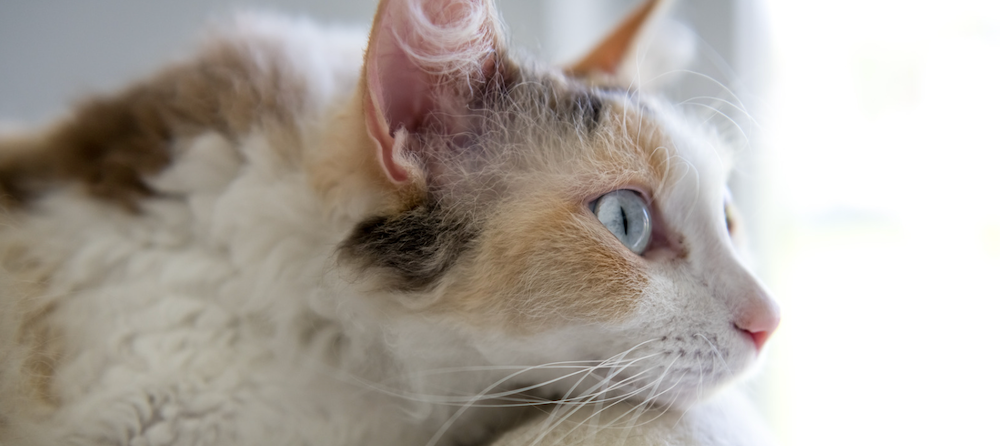
IV. Care and Maintenance of Laperm Cat Breed :
Grooming Needs :
Coat Care:
- Brushing: Despite their curly coats, Laperms require minimal grooming. Brush their coat once a week to remove loose hairs and prevent matting, especially in long-haired varieties.
- Bathing: Bathing is rarely needed. When necessary, use a mild cat shampoo and ensure thorough rinsing to avoid skin irritation.
Additional Grooming:
- Nail Trimming: Trim your cat’s nails every few weeks to prevent overgrowth and reduce the risk of scratches.
- Ear Cleaning: Check your cat’s ears regularly for dirt, wax buildup, or signs of infection. Clean gently with a vet-recommended ear cleaner if needed.
- Eye Care: Wipe any discharge from the corners of the eyes with a damp cloth. If you notice excessive tearing or signs of infection, consult your vet.
Health Consideration :
General Health:
- Regular Vet Visits: Schedule regular veterinary check-ups to monitor your Laperm’s health, update vaccinations, and address any emerging issues.
- Dental Care: Dental health is crucial. Brush your cat’s teeth regularly with cat-specific toothpaste and provide dental treats to help prevent periodontal disease.
- Parasite Control: Use flea, tick, and worm preventatives as recommended by your veterinarian to protect your LaPerm from parasites.
- Spaying/Neutering: Spay or neuter your cat to prevent unwanted litters and reduce the risk of certain health issues.
Common Health Issues:
- Genetic Disorders: While Laperms are generally healthy, they may be prone to certain genetic disorders. Regular vet check-ups can help detect and manage these conditions early.
- Allergies: Monitor for signs of allergies, such as itching or digestive issues, and consult your vet for appropriate management.
Nutrition :
- Balanced Diet: Feed your Laperm a balanced diet consisting of high-quality commercial cat food, either wet, dry, or a combination of both. Ensure the food is appropriate for their life stage (kitten, adult, senior).
- Protein-Rich: Cats are obligate carnivores, so their diet should be rich in animal protein. Look for foods with high protein content and limited fillers like grains and carbohydrates.
- Portion Control: Follow feeding guidelines provided on the food packaging or as advised by your veterinarian to prevent overfeeding and obesity.
- Fresh Water: Ensure fresh water is available at all times. Hydration is important for overall health, especially if feeding primarily dry food.
Exercise :
- Activity Level: Laperm cats have a moderate activity level. They enjoy playing and exploring their environment, and they need regular exercise to stay healthy and happy.
- Interactive Play: Engage your LaPerm with interactive toys such as feather wands, laser pointers, and puzzle toys. These not only provide physical exercise but also stimulate their curious minds.
- Climbing and Scratching: Provide climbing structures like cat trees and scratching posts to encourage natural behaviors and keep them active.
- Playtime: Dedicate time each day for interactive play sessions. This helps strengthen your bond and provides the necessary physical and mental stimulation.
V. Suitability of Laperm Cats :
Compatibility with Children and Other Animals :
With Children:
- Friendly and Gentle: Laperm cats are known for their affectionate and gentle nature, making them excellent companions for children.
- Playful: They enjoy interactive play, which can be a great way for children to bond with them. Laperms are patient and tolerant, typically handling the sometimes-rough play of young kids well.
- Supervision: While Laperms are generally good with children, it’s essential to supervise interactions to ensure that the cat is treated gently and respectfully.
With Other Pets:
- Social and Adaptable: Laperms are typically sociable and can get along well with other pets, including other cats and dogs.
- Non-Aggressive: They have a friendly disposition and are not known to be aggressive, making them suitable for multi-pet households.
- Gradual Introductions: When introducing a Laperm to other pets, it’s crucial to do so gradually and under controlled conditions to ensure a smooth transition and to allow all pets to become comfortable with each other.
Special Considerations for Multi-Pet Households :
Introducing LaPerms to Existing Pets:
- Slow Introduction: Start by keeping the new Laperm in a separate room to allow the existing pets to get used to their scent. Gradually allow short, supervised interactions.
- Positive Reinforcement: Reward all pets with treats and praise during and after interactions to create positive associations.
- Safe Spaces: Ensure each pet has its own safe space to retreat to. This helps prevent territorial disputes and allows each pet to feel secure.
- Monitor Behavior: Watch for signs of stress or aggression and intervene if necessary. Adjust the pace of introductions based on the comfort levels of all pets involved.
Multi-Pet Household Tips:
- Equal Attention: Provide equal attention to all pets to prevent jealousy and ensure everyone feels valued.
- Separate Resources: Provide separate feeding stations, litter boxes, and resting areas for each pet to reduce competition and stress.
Environmental Needs :
Space Requirements:
- Indoor Environment: Laperms are adaptable and can thrive in various living environments, from apartments to larger homes. They do not require excessive space but do benefit from a stimulating environment.
- Climbing and Exploration: Provide vertical spaces like cat trees, shelves, and perches to satisfy their curiosity and need for exploration.
Special Environmental Considerations:
- Temperature: Laperms do not have specific temperature requirements and can adapt to a typical home environment. However, they should be kept indoors or in safe, enclosed outdoor spaces to protect them from extreme weather conditions and potential dangers.
- Stimulation and Enrichment: Ensure they have plenty of toys, scratching posts, and interactive play opportunities to keep them mentally and physically stimulated.
Settling into the Home Environment:
- Gradual Acclimatization: When bringing a Laperm into a new home, allow them to explore at their own pace. Start with a single room and gradually introduce them to the rest of the house.
- Routine: Establish a consistent routine for feeding, playtime, and rest. This helps the Laperm feel secure and understand what to expect.
- Comfort Items: Provide cozy beds, blankets, and hiding spots to create a comfortable and secure environment for them to relax.
In summary, Laperm cats are highly suitable for families with children and other pets due to their friendly, gentle, and adaptable nature. Proper introductions and environmental enrichment are key to ensuring they thrive in multi-pet households and various living environments. With the right care and attention, Laperms can settle well into almost any home, providing affectionate companionship and lively interaction.
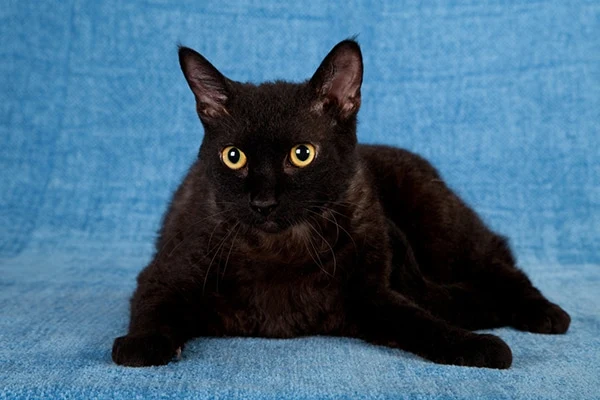
VI. Adoption and Breeder Consideration of Laperm Cat Breed :
Encouraging Adoption from Shelters or Rescue Organizations :
Benefits of Adopting a Cat in Need:
- Saving a Life: Adopting from a shelter or rescue organization gives a cat a second chance at a loving home. Many cats in shelters are there due to no fault of their own.
- Reducing Overpopulation: Adoption helps reduce the number of homeless cats and decreases the demand for irresponsible breeding practices.
- Health and Vet Care: Many shelter cats are already spayed or neutered, vaccinated, and health-checked, which can save you initial veterinary costs.
- Variety: Shelters often have cats of all ages, colors, and temperaments, making it possible to find a LaPerm or a mixed breed with similar characteristics.
- Support and Resources: Rescue organizations often provide support and resources to help new pet owners with the transition, including advice on care and training.
Selecting a Reputable Breeder :
Importance of Ethical Breeding Practices:
- Health Screenings: Reputable breeders prioritize the health of their cats. They conduct genetic testing and health screenings to ensure their cats are free from hereditary diseases.
- Proper Care and Socialization: Ethical breeders raise kittens in a home environment, providing proper socialization and care. This results in well-adjusted and friendly cats.
- Transparency: A reputable breeder will be open to questions and willing to provide detailed information about the kitten’s lineage, health records, and the conditions in which they were raised.
- Contract and Guarantees: Ethical breeders often provide a contract that includes health guarantees and a return policy if the new home does not work out.
Guidance on Selecting a Reputable Breeder:
- Research: Start by researching breeders through breed clubs, associations, and online forums. Look for breeders with positive reviews and strong reputations.
- Visit: If possible, visit the breeder’s facility to see the conditions in which the kittens are raised. This will give you insight into the breeder’s practices and the kittens’ environment.
- Ask Questions: Inquire about the breeder’s experience, breeding practices, health screenings, and the socialization of the kittens. A good breeder will be knowledgeable and transparent.
- References: Ask for references from previous buyers. This can provide insight into the breeder’s reputation and the quality of their cats.
Cost Considerations and Potential Adoption Fees :
Adoption Costs:
- Shelter Adoption Fees: Adoption fees from shelters and rescue organizations typically range from $50 to $150. This fee often includes spaying/neutering, vaccinations, and a health check.
- Additional Costs: Consider additional costs such as initial veterinary visits, supplies (litter box, scratching post, toys), and ongoing expenses (food, regular vet care).
Purchasing from a Breeder:
- Breeder Prices: The cost of purchasing a Laperm from a breeder can range from $800 to $1,500 or more, depending on factors such as the kitten’s lineage, coat quality, and the breeder’s reputation.
- Initial Expenses: In addition to the purchase price, be prepared for initial expenses such as veterinary check-ups, vaccinations, and essential supplies.
- Long-Term Costs: Owning a Laperm involves ongoing costs including high-quality food, regular veterinary care, grooming supplies, and pet insurance.
Financial Insights:
- Budgeting: Plan and budget for the long-term costs of pet ownership. Cats can live 12-15 years or more, and their care requires a consistent financial commitment.
- Pet Insurance: Consider investing in pet insurance to help manage unexpected veterinary expenses. This can provide peace of mind and financial stability in case of emergencies.
- Savings: Setting aside a savings fund for your pet’s needs can help cover routine care and unexpected health issues.
In summary, adopting a Laperm cat from a shelter or rescue organization offers numerous benefits and supports the welfare of animals in need. If purchasing from a breeder, it is crucial to select a reputable and ethical breeder who prioritizes the health and well-being of their cats. Understanding the financial aspects of cat ownership, including initial and ongoing costs, ensures that you are well-prepared to provide a loving and stable home for your LaPerm.
VII. Conclusion
Laperm cats, with their distinctive curly coats and affectionate personalities, are a unique and charming breed beloved by many cat enthusiasts. Their origins trace back to a natural genetic mutation discovered in a barn cat in The Dalles, Oregon, in the early 1980s. From this humble beginning, the LaPerm breed has grown in popularity, known for its friendly demeanor and playful nature.
One of the defining characteristics of the Laperm breed is their curly or wavy coat, ranging from loose waves to tight ringlets. This feature, resulting from a spontaneous mutation, sets them apart from other cat breeds and contributes to their unique appearance and tactile sensation. Despite their curly coats, LaPerms require minimal grooming, with weekly brushing usually sufficient to keep their coat in good condition.
In terms of temperament, Laperms are known for their affectionate and sociable nature. They form strong bonds with their human companions and enjoy being part of family activities. Playful and curious, they engage in interactive play and exploration, showing intelligence and a willingness to learn tricks. Their gentle disposition makes them suitable for families with children, as they tolerate the sometimes-rough play of young kids well.
Laperms also tend to get along well with other pets, including other cats and dogs, making them a good choice for multi-pet households. When introducing a Laperm to existing pets, gradual introductions under controlled conditions are recommended to ensure a smooth transition and allow all pets to become comfortable with each other.
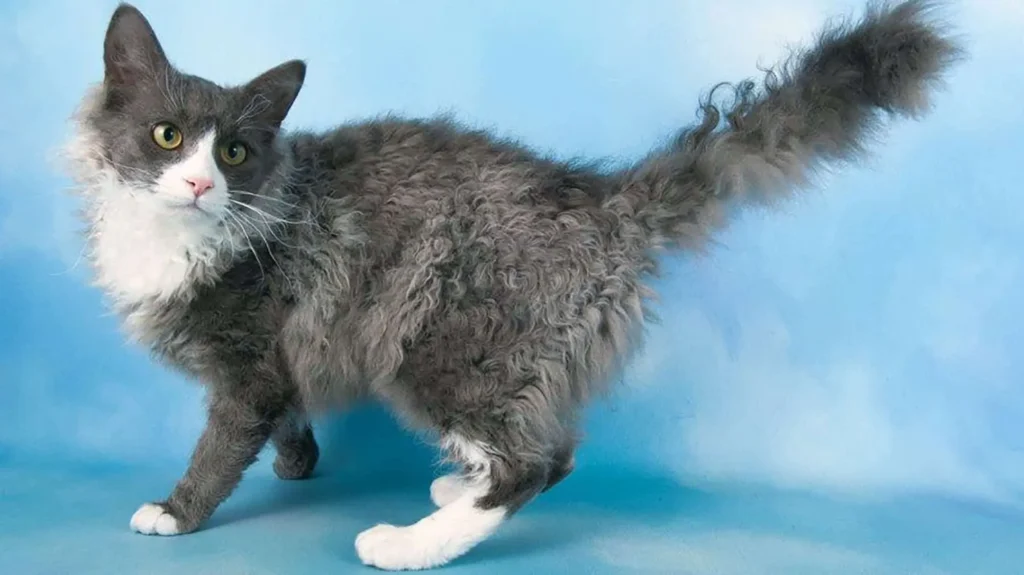
Whether adopting from shelters or rescue organizations or purchasing from reputable breeders, responsible ownership is paramount. Potential owners should conduct thorough research into the breed’s needs and be prepared for the financial and time commitments of pet ownership. Additionally, ethical breeding practices should be prioritized to ensure the health and well-being of the cats.
In conclusion, Laperm cats bring joy and companionship to their owners with their affectionate personalities and unique curly coats. By providing proper care, attention, and love, LaPerms thrive in loving homes, enriching the lives of their human companions for years to come.
FAQ about Laperm Cat Breed :
Are Laperms prone to any health issues?
Laperms are generally healthy cats, but like all breeds, they may be prone to certain genetic disorders. Responsible breeding practices and regular veterinary check-ups can help mitigate potential health concerns.
Do Laperms require a special diet?
Laperms do not require a special diet, but it’s essential to provide them with a balanced and nutritious diet suited to their age, activity level, and health needs. High-quality cat food rich in animal protein is recommended.
Are Laperms prone to any health issues?
Laperms are generally healthy cats, but like all breeds, they may be prone to certain genetic disorders. Responsible breeding practices and regular veterinary check-ups can help mitigate potential health concerns.
Do Laperms enjoy water?
Some Laperms may enjoy playing with water, while others may be indifferent. It varies from cat to cat. Introducing water play gradually and using positive reinforcement can help determine their preferences.
Are Laperms suitable for families with children and other pets?
Yes, Laperms are known for their friendly and sociable nature, making them excellent companions for families with children and other pets.
How long do LaPerm cats live?
LaPerm cats typically live between 12 and 15 years. Some may even reach 20 years with proper care! These friendly felines have a distinctive coat—wavy in short-haired LaPerms and curly in longer-haired ones.
Can LaPerm cats be left alone?
LaPerm cats are generally social and affectionate, so they prefer companionship. However, they can tolerate being left alone for moderate periods. If you need to leave your LaPerm, make sure they have toys, scratching posts, and cozy spots to keep them entertained.

